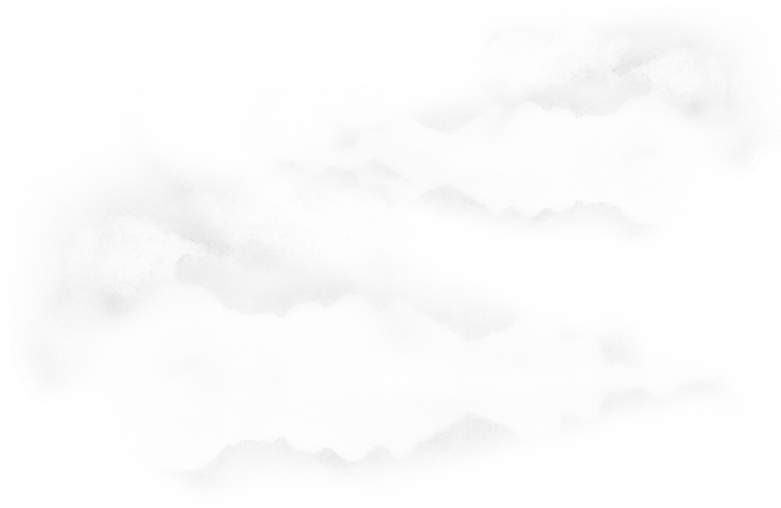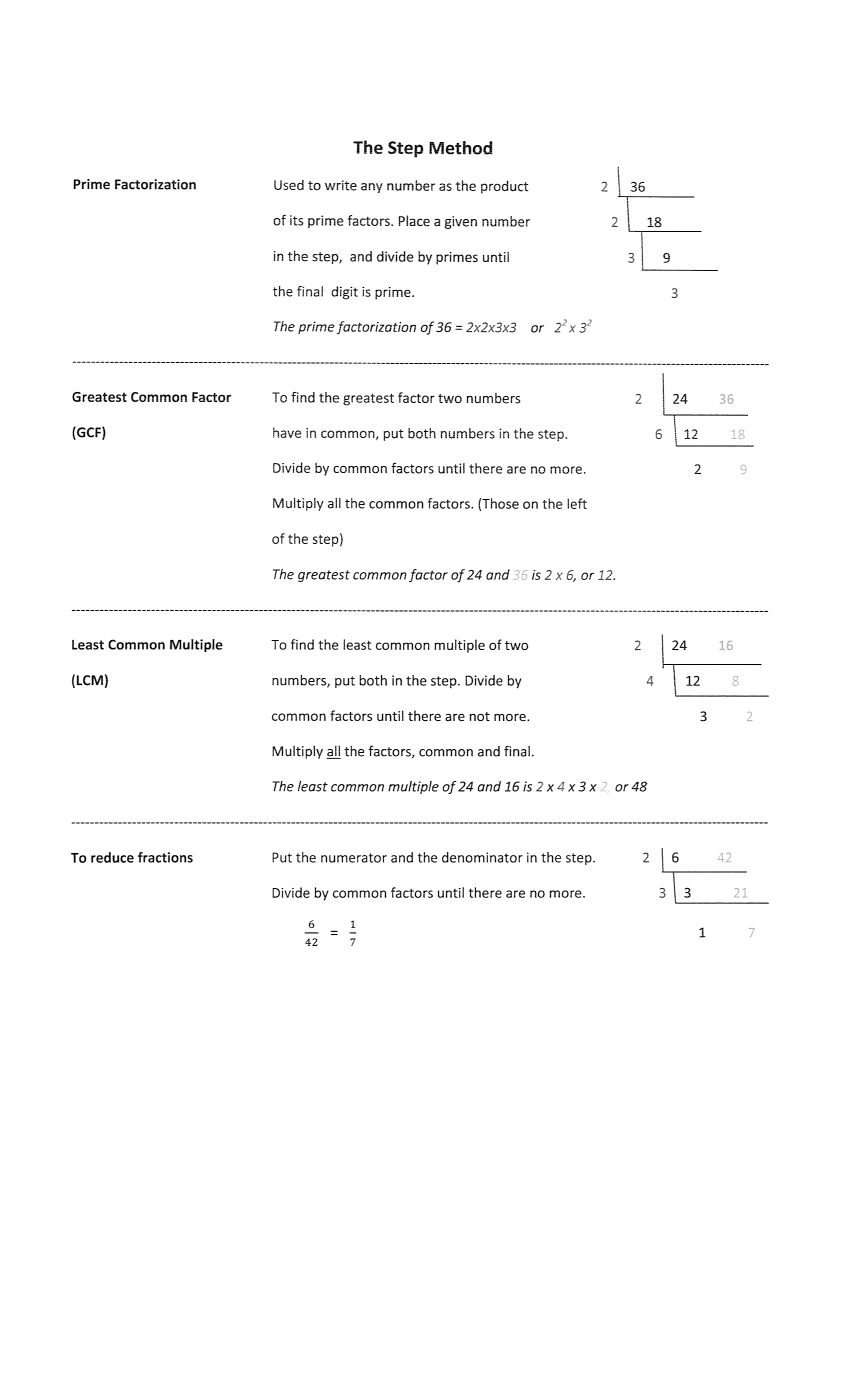


Add or subtract decimals Divide a decimal number by a whole number
Line up the decimal points. Place the decimal point into the quotient directly above the
decimal point in the dividend. Divide as for whole numbers.
Multiply decimals Divide a whole number by a decimal number
Align both factors to the right. Move the decimal point to the end of the divisor.
Multiply as whole numbers. Move the decimal point (at the end of the dividend) the same
number of spaces.
Count the total number of decimal places in both factors. Place the decimal point into the quotient directly above the
decimal point in the dividend.
There will be that same number of decimal places in the product. Divide.
Divide a decimal number by a decimal number
Move the decimal point to the end of the divisor.
Move the decimal point in the dividend the same number of spaces.
Place the decimal point into the quotient.
Divide.
How to add integers. How to multiply or divide integers
Same signs, add them. Different signs, subtract them. Multiply or divide as if there were no signs involved.
The answer gets the sign of the number farther from zero. Same signs, answer is positive.
Different signs, answer is negative.
How to subtract integers.
To subtract an integer, add its opposite.
How to:
Multiply Fractions
1) Put everything into fraction form.
2) Cross-factor if possible.
3) Multiply numerators; multiply denominators.
4) Reduce to lowest terms.
Divide Fractions
1) Put everything into fraction form.
2) Copy the first fraction.
3) Change the multiplication sign to a division sign.
4) Invert the second fraction.
5) Multiply numerators, multiply denominators.
6) Reduce to lowest terms.
Multiply Fractions
1) Put everything into fraction form.
2) Cross-factor if possible.
3) Multiply numerators; multiply denominators.
4) Reduce to lowest terms.
Divide Fractions
1) Put everything into fraction form.
2) Copy the first fraction.
3) Change the multiplication sign to a division sign.
4) Invert the second fraction.
5) Multiply numerators, multiply denominators.
6) Reduce to lowest terms.
Math Help
Add or subtract fractions
You must have a common denominator.
To find the common denominator, try these methods.
a) Does the smaller denominator go evenly into the larger?
b) Use the step method to find the LCM.
c) If all else fails, multiply the two denominators.
Once you have the common denominator, create equivalent fractions.
Add or subtract the new numerators.
When subtracting mixed numbers, you may need to borrow from the
whole number column. Trade the "one" you borrow for a fraction with numerator and denominator the same as the example's common denominator. Add that fraction's numerator to the numerator you already had. Then subtract.
You must have a common denominator.
To find the common denominator, try these methods.
a) Does the smaller denominator go evenly into the larger?
b) Use the step method to find the LCM.
c) If all else fails, multiply the two denominators.
Once you have the common denominator, create equivalent fractions.
Add or subtract the new numerators.
When subtracting mixed numbers, you may need to borrow from the
whole number column. Trade the "one" you borrow for a fraction with numerator and denominator the same as the example's common denominator. Add that fraction's numerator to the numerator you already had. Then subtract.

36
2
----------------------------------------------------------------------------------------------------------------------------------------------------------------------
GEOMETRY
An acute angle measures less than 90 degrees. Perimeter is the distance around the outside of a polygon.
A right angle measures 90 degrees. It is measured in units of length, like inches, feet, or meters.
An obtuse angle measures more than 90 degrees. To find perimeter of any plane figure, add all side lengths.
Perimeter of a circle (Circumference) = 2 Pi r or Pi d
An acute triangle has three acute angles. Area is the space inside a polygon.
A right triangle has one right angle. It is measured in square units.
An obtuse angle has one obtuse angle. To find area of a rectangle, A = l x w
Area of a triangle = (l x w) / 2
Area of a circle = Pi (r squared)
Volumeis the space inside a three dimensional figure.
An equilateral triangle has three equal sides. It is measured in cubic units.
An isosceles triangle has two equal sides. To find volume of a rectangular prism, V = l x w x h
A scalene triangle has no equal sides. Volume of any prism or cylinder = B (area of base) x h
The three angles of a triangle sum to 180 degrees.
A straight line measures 180 degrees.
The four angles of any quadrilateral sum to 360 degrees.
The sum of the interior angles of any polygon is equal to 180(n-2),
when n is the number of sides of the polygon.
Some Rhymes to Remember
Change fractions into decimals (Jingle Bells) Mean Median Mode Range-Hey Diddle Diddle
Change fractions into decimals, it's easy as can be.
Divide the numerator by the denominator, see -ee. Hey Diddle Diddle, the median's middle
You'll have to add a decimal point, and maybe zeros three. You add and divide for the mean
Pop the decimal point up on the roof, and divide so easily. The mode is the one that appears the most
And the range is the difference between.
But... if you think that you may louse
the process up and you're in doubt -
Put the numerator in the house
and leave denominator out.